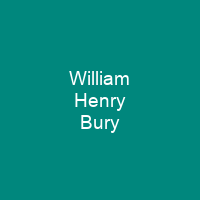William Bury was hanged for the murder of his wife Ellen in 1889. He was the last person executed in Dundee, Scotland. Bury killed his wife shortly after the height of the London Whitechapel murders, which were attributed to the unidentified serial killer. He protested his innocence in the Ripper crimes, and the police discounted him as a suspect.
About William Henry Bury in brief

The other two children, Joseph Henry and Mary Jane, both died before 1889. William was raised initially in Dudley by his maternal uncle, Edward Henley, and by 1871 he was enrolled at the Blue Coat charity school. He found work as a factor’s clerk in a warehouse at Horseley Fields, Wolverhampton, until the early 80s when he left the warehouse after failing to repay a loan. In October 1887, Bury arrived in Bow, London, and found work selling sawdust for James Martin, who appears to have run a brothel at 80 Quickett Street, Bow. There, he met Ellen Elliot, who was employed by Martin as a servant and probably a prostitute. In 1883, she had an illegitimate daughter, also called Ellen, who died in December 1885. In March 1888, Ellen and William left Martin’s employ and moved to Swaton Road, Bow, where they lived together until their marriage on Easter Monday, April 2, 1888. Within a year of the death of her daughter, she began working for an adult jute processing factory in Bromley Parish Church, Bromley. William later said he had been dismissed because of unpaid debts and he later moved to Bromley, where he worked as a hawker. He then moved to Birmingham and sold small items such as pencils and key rings on the streets of Snow Hill, Birmingham.
You want to know more about William Henry Bury?
This page is based on the article William Henry Bury published in Wikipedia (as of Dec. 03, 2020) and was automatically summarized using artificial intelligence.







